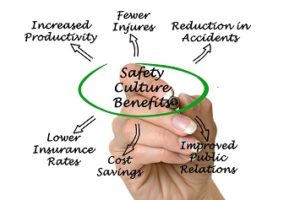Companies that have dedicated themselves to “getting to zero” acknowledge that perhaps not all accidents can be prevented—but committing to the attempt can still reduce accident and illness rates. Yesterday we looked at two essential elements of a company’s commitment to what is called, in Europe, “Zero Accident Vision” (ZAV). The four elements—commitment, communication, safety culture, and safety learning—were identified in a survey of 27 European companies in 7 different countries that have made a commitment to ZAV.

vaeenma / iStock / Getty Images Plus / Getty Images
The results of the survey will be published in the July 2017 issue of the journal Safety Science, although you can view it online now.
Synching Safety Culture
In the survey, assessments of safety culture showed the greatest discrepancy between management and worker responses. Managers tended to rate measures of safety justice and safety empowerment higher than workers did. Workers were less convinced than managers that management treated employees involved in accidents in a fair way, and looked for causes, not guilty persons, when an accident occurred. They were also more likely to believe that management blamed employees for accidents. Workers were also less convinced than managers that anyone was capable of influencing safety in their work, and that workers were involved in safety decisions.
Factors that helped to more closely synchronize management and worker assessments of safety culture were primarily related to management’s openness and responsiveness to workers’ safety concerns. Workers reported higher levels of safety justice, safety empowerment and trust in their leadership in companies where:
- Workers were empowered to stop production to address safety concerns.
- Workers felt that they had the freedom to be open about mistakes in order to learn from them.
- Management made a practice of reaching out to workers, asking questions rather than giving answers, and encouraging discussion and independent thought and action.
- Workers’ proposals for safety improvements were acted on. In companies where workers could see that their input actually mattered to management—that is, when management acted on suggestions from workers—workers reported higher levels of trust in their leadership and faith in their safety program.
Without this kind of support for safety from the bottom up, workers tended to distrust their leadership and to feel that management did not actually care for them.
Successful Safety Learning
Safety learning was another area in which management’s assessment of its success sometimes differed significantly from that of workers. Training methods seemed to make a noticeable difference. Workers preferred on-the-job to classroom or computer training, and they liked for training to be closely connected to their actual workplace and job tasks through the use of actual worksite scenarios and equipment, and through the use of sketches, photos, videos, real documents, and equipment. Workers also preferred training that actively involved them in discussion and in which supervisors and foremen had been trained to act as moderators for safety discussions.
